Jan 01, 2026
Jan 01, 2026
The Glory of Roman Civilization
Continued from Previous Page
The world civilizational history offers certain interesting yet ironic paradoxes too. For instance, Europe has now taken a distinct lead over the rest of the world in general prosperity and development in the modern age. On the other hand, while ancient civilizations like Indian, Egyptian, Sumerian, and so on, in parts of Asia and Africa were fairly well developed and culturally evolved human societies even in three to five millennia BCE, the most of the Europe was still undeveloped, wild and inhabited by aborigines and nomadic tribes. Compared to that, the ancient Roman civilization evolved in the southern Europe is not of much antiquity value. Nonetheless, the ancient Roman civilization was one of the greatest and among most glorious civilizations of the world.
At their peak glory, the Romans were undoubtedly among the few mighty and influential races, dominating the Mediterranean region, the Balkans, as well as South and Western Europe till about 5th Century CE. Areas under the control of the Western Roman empire included Africa, Britannia (Great Britain), Gaul (present day France, Luxembourg, Belgium, most of Switzerland, and parts of Northern Italy, the Netherlands, and Germany) and Hispania (Spain and Hispaniola, an island in Caribbean archipelago). The Eastern part of the Roman empire being managed from Constantinople included Egypt, Syria, parts of Asia, the Balkans and Greece. After the Roman empire declined with the advent of Christianity and political compulsions, it broke into several independent kingdoms and states in Europe and other parts.
A Brief Ancient Civilizational History of Romans
The archaeological evidence of human occupation of the Rome dates back to about 5,000 years, but the knowledge of the early civilization of Rome, Italy is rather vague and reliable history is not well known before 8th Century BCE. Some archaeological finding from the Italian peninsula suggests the presence of Homo sapiens (modern man) in the region in Neolithic period as the hunter-gatherer cultures of then Europe. Some other findings of the time are Cardium potteries so named because of the imprints on clay with cockle shells (salt-water edible mollusks). Also, some remnants of Polada culture (ancient Bronze Age) suggest early settlements on pile dwellings between the region of the present-day Milan and Venice in the northern Italy. Very little is known about many subsequent settlements and cultures such as Nuragic, Palma Campania, Apennine, Terramare, Castellieri, Canegrate, Proto-Villanovan, Luco-Meluno, Villanova, and so on, in various parts from the Bronze age through the Iron age (early 10th Century BCE).
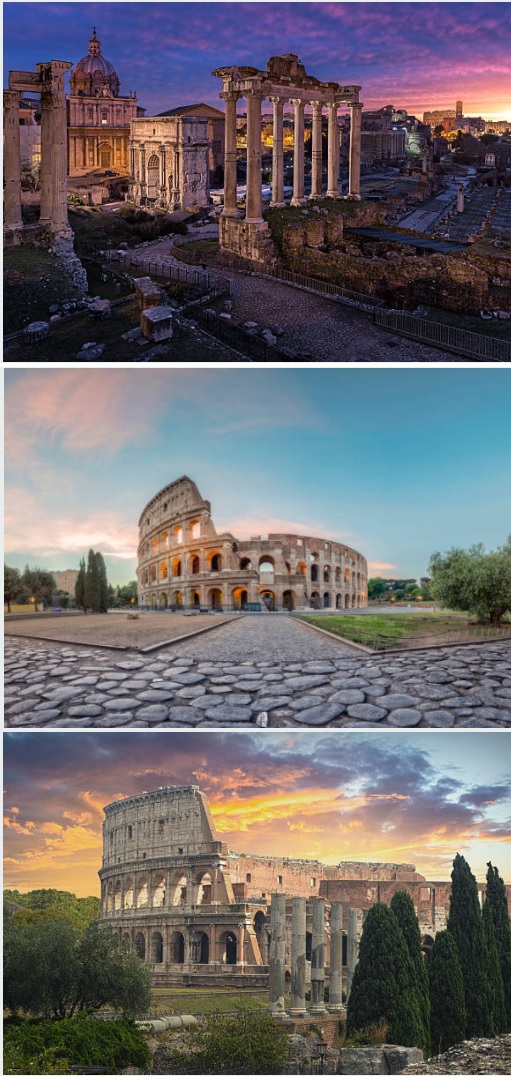
The recorded and reliable history of the Roman civilization begins with the ancient Rome in the eighth century BCE, which initially grew as a town on central Italy’s Tiber River and in due course became the most celebrated and powerful empire encompassing most of the continental Europe, Britain, bulk of the western Asia, north Africa and Mediterranean islands. According to a mythical legend, Rome was founded by Romulus and Remus, twin sons of Mars, the Roman god of war. Among the prominent legacies of the dominant Roman civilization are the Latin derived Western alphabets and Romance languages such as Italian, French, Spanish, Portuguese and Romanian, the Catholic Church and Christianity as the dominant world religion and the modern calendar and Roman laws. In the beginning of history, it had a few kingdoms, followed by a republic that turned into a powerful empire during Julius Caesar’s reign.
According to the legendary tale, the twins Romulus and Remus were left in a basket to drown in Tiber River by a king but rescued and fed by a she-wolf. Later the twins defeated the evil King Amulius and established Rome on the river’s banks in 753 BCE which was so named after in a later conflict Romulus killed own brother Remus and declared self as the first king of the city. These twins are said to have actually descended from the Trojan prince Aeneas and grandfather King Numitor of Alba Longa but are linked to Mars because he had supposedly enticed or raped and impregnated their mother, Rhea Silvia. Following Romulus, several kings followed in a non-hereditary succession from the lines of Sabine, Latin and Etruscan (earlier pre-historic Italian tribes). The names of at least seven legendary kings of Rome are recorded in the History (753 – 510 BCE) as Romulus, Numa Pompilius, Tullus Hostilius, Ancus Martius, Lucius Tarquinius Priscus (Tarquin the Elder), Servius Tullius and Tarquinius Superbus. In Latin, these kings were known as Rex and the latter six were elected by the senate in Rome.
Apparently, many ethnic groups/tribes existed but the major ethnic groups in the region in the 8th century BCE were the Etruscans and Greeks in the south, and the former dominated after 650 BC as the last three kings are identified from this clan. During this period, many temples were built and the worship of the triad of gods, namely Jupitar, Juno and Minerva started. Notwithstanding the impact of the Etruscans, the Romans remained heavily influenced by the Greek cities in the South through trade and cultural exchange. However, the tradition of kingdom was replaced by Republic system of governance by 509 BCE where under the elected senators would run the government.
During the next five centuries, the Roman civilization retained the features of a Republic which is administered by an elected government and leader – a unique characteristic by all means for those days. Incidentally, this period was also marked by great expansion and influence of the Roman territory. For instance, Rome gained regional dominance in Latium (central western Italy) during the 5th century BCE, established the supremacy of Rome over the Latin countries that it had lost after the fall of the kingdom, and after the Punic Wars era (264 - 146 BCE), it gained dominance over the entire Western Mediterranean, replacing the earlier Carthage as the dominant regional power. The period of the Roman Republic is traditionally reckoned from 509 BCE to 27 BCE. This period is considered as the classical Roman civilization led by the people themselves, which was replaced by the Roman empire with the advent of Julius Caesar, an army general.
The Republican Roman society was essentially a hybrid culture of the Latin and Etruscan societies, with lesser role of Sabine, Oscan and Greek cultural attributes. The features of democracy, and extensive range of associated executive, legislative, judicial, military, and religious powers in its primitive forms are the earliest gifts of the democratic governance by Romans to the rest of the Europe and western world. Among the ancient civilizations, perhaps the only other country with the Republican features and oligarchies was India, from where many states with similar system of governance are reported from the northern India around the sixth century BCE. It may perhaps be unfair to even venture in discourse as to whether Indian or Romans introduced the system first or even who inspired whom in this regard. Instead, it should be sufficed to know that two great ancient civilizations had not only experimented with the federalism and republican form of government but such a system flourished too with these features there for fairly a long period.
However, throughout the Republican era of Roman civilization, the Republic remained at the constant war and turmoil due to interventions and attacks from its Latin and Etruscan neighbours, and the Gauls. Among the major adversaries were Gauls (present day France and parts of Italy) and Carthage (modern Tunisia), against whom Romans had have many conflicts and wars during the Republic era. Several conquests during the period also led to many evils in the Republic such as frequent disruptions in the society, rise of aristocracy due to immense use of slaves brought through conquests, and ruined peasantry and worker class. Towards the end of the Republic era, the military generals of the Roman military greatly enhanced their powers, and influence and intervention in the political system. Rome also witnessed series of civil wars engaging military generals due to aforesaid reasons: Initially, Julius Caesar took control by defeating Pompay, and became dictator for life but was murdered in 44 BCE.
Now, the war broke with the Caesar’s adopted son Octavian and deputy Mark Antony on one side and his assassins Brutus and Cassius in 42 BC, in which the former prevailed but the two now turned against each other in a power struggle. With the final defeat of Mark Anthony and his lover Cleopatra in 31 BCE, Octavian assumed vast powers from the senate, who became the first Roman emperor as Augustus ending the Republic era. Caesar Augustus (Octavian)’s reign lasted from 27 BCE until his death in 14 CE, and he is officially recognized as the first emperor of the Roman empire. Augustus’s hereditary line included the unpopular Tiberius (14-37 CE), an unstable and bloodthirsty Caligula (37-41) and Claudius (41-54); the latter is mostly remembered for his conquest of Britain. Mercurial and tyrant Nero (54-68) was the last emperor of this line who drained the Roman treasury on his whimsical acts and eventually committed suicide.
Among other subsequent notable Roman emperors in the post-Christ era are Diocletian and Constantine. Diocletian ruled from 284 to 305 CE, who divided the power among the said tetrarchy (rule of four), sharing his title of Augustus (emperor) with Maximian. Diocletian divided power into self and Maximian, simultaneously choosing two generals, Galerius and Constantius as their successors, respectively. Under this arrangement, Diocletian and Galerius ruled the eastern Roman Empire, while Maximian and Constantius took charge of the Western part. After Diocletian, Constantius’s son Constantine the Great emerged as the next influential emperor from 306 to 337 CE. Constantine is known for several administrative, financial, social and military reforms including introduction of the solidus, a gold coin, that stayed as a standard mark for the subsequent Byzantine empire and European currencies for about a thousand year. His other landmark decisions were shifting capital to Constantinople (erstwhile Greek city Byzantium), and own conversion to Christianity and subsequent promotion of the new Abrahamic religion.
The Christianity was soon declared by Constantine as the official religion of the Roman empire that facilitated the growth and expansion of the Christian Romancatholic church and faith in a more organized manner replacing the traditional Roman pantheon with time. Even the Pantheonis, a famous Roman temple, was rechristened as a Catholic church dedicated to St. Mary and the Martyrs. However, after the death of Constantine, eastern and western empires were again divided and Roman empire eventually collapsed losing its states one by one; Britain in 410 CE, Spain and northern Africa in 430 CE, and so on. Subsequently, during the Gothic wars the Roman empire further weakened and with the onset of the Middle Age around 5th century CE, the Medieval Rome was delinked from Constantinople and the ancient culture of Rome gradually faded leading to the formation of the Papal states.
Arguably, the city of Rome was also the largest city and famous for its grandeur in the world around thattime. Among the remarkable events in the post-Christ era, the Great Fire of Rome occurred in 64 CE, which destroyed nearly two-third of Rome. The then Roman emperor Nero suspected some Christians behind this fiasco, which led to mass persecution of this community by the state. Following Nero’s death in 68 CE, The Roman Empire was rules by the Flavin dynasty; during this period, the world’s largest ancient Amphitheatre, the Colosseum was built in Rome by the emperor Vespasian and his successor Titus. Yet another notable period of the Empire era was the Crisis of Third Century (235 – 284 CE) or Imperial Crisis after the assassination of Emperor Severus Alexander, when the Roman Empire almost collapsed under the pressures of barbarian invasions, civil wars, peasant rebellions, political instability, etc.
During its prime time, Rome was probably the largest city in the world with a population of nearly one million according to some scholarly estimates. According to the popular belief, the urban population, military settlements and industrial establishments along with the temples and impressive building for social gatherings, etc., in Rome were of high standards. In the ancient Rome, the city was characterized by the seven hills with human settlements spread in the surroundings accordingly. The city was famous for its architectural monuments and structures, some of which such as the famous Pantheon, the Forum of Trajan, and the Colosseum have survived and can still be seen. The city of Rome also had many aqueducts for the drinking water and fascinating fountains, and many gymnasiums, theaters, libraries, old markets, and so on. Imperial palaces were famous for its architectural designs and grandeur while elaborate villas and modest houses were built for other elites and common people. The Roman architecture and engineering skills, such as aqueducts and transportation system, have had a significant impact even on the development in the modern world.
The agriculture, handicraft and potteries were fairly well developed in the rural parts of the Roman empire. The ancient Rome also patronized the arts of music, literature, sculpture and paintings. The art of painting was greatly influenced with the Greek style and frescoes were used for the decoration of the palaces and villas. Such paintings were usually made on wood and ivory, and some of them have even survived till date, including masonry and marble imitations with the depiction of the elements of the Roman mythology. The oldest Roman literary works include epics on Roman military adventures as also of the genres like history, tragedy, comedy and poetry. The ancient Rome was also famous for its variety and classical sculptural art including ornate and relief sculptures depicting war adventures and victories of the Roman emperors. Music was also an essential part of Roman life with Greek influence and diverse instruments, including the cornu and tuba for the military purposes, and the lituus and trumpets for the ceremonies. The Roman Amphitheaters were the popular venues for the performance of music, fights and wrestling, etc.
Roman Gods and Goddesses
Like many other ancient civilizations of the Old World, the Romans too believed in multiple gods associated with various natural phenomenon or basic human needs. In that context, the Roman culture indeed had a rich and vibrant mythological background, as for as the creation of world is concerned, the Roman and Greek civilizations share somewhat similar myth of Chaos, the dark and silent abyss, from which all living things were created starting with Gaia (Earth) and Ouranos (Sky, Heavens). The Roman pantheon had numerous gods and goddesses, nearly for every imaginable thing on earth. While some of the Roman gods are adaptations of the Greek counterparts but many others were original too. Like the gods of other ancient cultures, the Roman gods too were majestic persona with magical powers. Here about a dozen relatively more important gods and goddesses have been briefly dealt with.
1. Jupiter
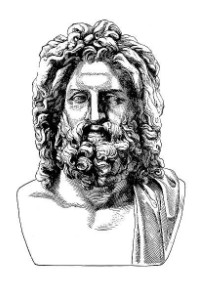 Jupiter, also known as Jove and Lovis, was the king of gods in Roman pantheon and mythology, and in-charge of the sky, light and thunder. He remained the chief deity of Romans throughout the Republican and Imperial eras, until the Christianity became the state religion of the Roman Empire. Eagle as sacred symbol is always shown with him, which was also adapted by the Roman army as its symbol, and thunderbolt was his chief weapon. Romans had a belief that the protector of the state and laws, Jupiter Optimus Maximus guarded the city of Rome. His father was Saturn, brothers Neptune and Pluto, and sister and consort Juno; he formed the Capitoline Triad along with Juno and Minerva, wherein he was the central figure and guardian of the state. The Greek god Zeus and Roman Jupiter are considered as one and same in the ancient Roman art and literature. Romans offered him sacrificial offerings of the white ox (castrated bull), lamb and wether (castrated ram) to please and seek his grace. Of the three brothers, while Jupiter presided over the realm of Heaven, Neptune on the earthly world and Pluto the underworld.
Jupiter, also known as Jove and Lovis, was the king of gods in Roman pantheon and mythology, and in-charge of the sky, light and thunder. He remained the chief deity of Romans throughout the Republican and Imperial eras, until the Christianity became the state religion of the Roman Empire. Eagle as sacred symbol is always shown with him, which was also adapted by the Roman army as its symbol, and thunderbolt was his chief weapon. Romans had a belief that the protector of the state and laws, Jupiter Optimus Maximus guarded the city of Rome. His father was Saturn, brothers Neptune and Pluto, and sister and consort Juno; he formed the Capitoline Triad along with Juno and Minerva, wherein he was the central figure and guardian of the state. The Greek god Zeus and Roman Jupiter are considered as one and same in the ancient Roman art and literature. Romans offered him sacrificial offerings of the white ox (castrated bull), lamb and wether (castrated ram) to please and seek his grace. Of the three brothers, while Jupiter presided over the realm of Heaven, Neptune on the earthly world and Pluto the underworld.
2. Juno
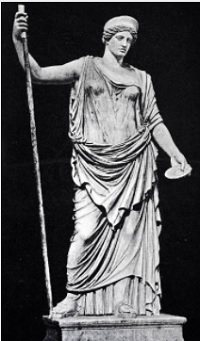 As the consort of Jupiter, Juno was the chief Roman goddess in the role of the guardian, protector and counsellor deity of the state. She was the daughter of Saturn, and mother of Mars, Vulcan, Bellona and Juventas. She had somewhat similar attributes of Hera, the queen goddess in Greek mythology including even sharing same sacred animal peacock. As the patron goddess of the city of Rome and Roman Empire, Juno was also known as Regina (the Queen) with a diadem (a jeweled crown or headband as symbol of sovereignty) and was a member of the Capitoline Triad, centered on the Capitoline Hill in Rome. She is often depicted armed in a goatskin cloak and this warlike aspect of Juno is comparable to the Greek goddess Athena, who too bore a goatskin or goatskin shield. She was also presided over the roles of marriage and child birth and given many names such as Juno Lucina, Juno Caprotina, Juno Curitis, Juno Sospita, and Lucina with each name signify some role. The month of June was also named after her.
As the consort of Jupiter, Juno was the chief Roman goddess in the role of the guardian, protector and counsellor deity of the state. She was the daughter of Saturn, and mother of Mars, Vulcan, Bellona and Juventas. She had somewhat similar attributes of Hera, the queen goddess in Greek mythology including even sharing same sacred animal peacock. As the patron goddess of the city of Rome and Roman Empire, Juno was also known as Regina (the Queen) with a diadem (a jeweled crown or headband as symbol of sovereignty) and was a member of the Capitoline Triad, centered on the Capitoline Hill in Rome. She is often depicted armed in a goatskin cloak and this warlike aspect of Juno is comparable to the Greek goddess Athena, who too bore a goatskin or goatskin shield. She was also presided over the roles of marriage and child birth and given many names such as Juno Lucina, Juno Caprotina, Juno Curitis, Juno Sospita, and Lucina with each name signify some role. The month of June was also named after her.
3. Neptune
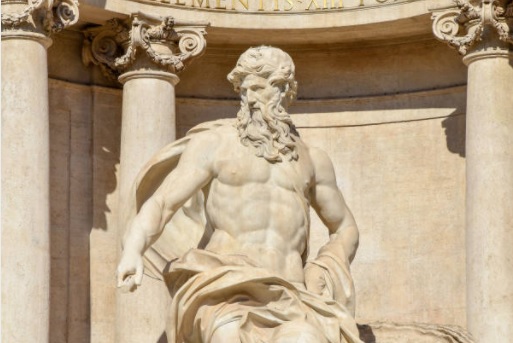
Neptune was the god of sea and controlled fresh water springs as well, and in attributes he was like the Greek god Poseidon. He carries a trident and is shown riding on a horse or a pair of horses, or sometimes even a dolphin; hence Romans also treated him as the god of horses under the name Neptunus Equester as also a patron of the horse-racing. His consort was Salacia, the goddess of salt water, who is often identified with the Greek goddess Amphitrite, the consort of Poseidon. Romans believed that Neptune was short tempered and his anger and furiosity was the cause of the shaking of earth and for this reason he was also known as the god of earthquakes. According to a legendary tale, Neptune wanted to marry Salacia, but she hid from him in the Atlantic Ocean. Then the grieving Neptune sent a dolphin to locate her and persuade to join his throne. Salacia finally agreed to marry Neptune and the latter granted the dolphin a place in the heavens as an award, where it was identified as a well-known constellation Delphinus.
4. Pluto
In classical Roman mythology, Pluto is the god and ruler of the underworld. As the Roman and Greek civilization grew parallelly in about the same time capsule and broad geographical spread, they had many commonalities in their mythology too. For instance, Pluto’s corresponding god of the underworld in Greek mythology is Hades with similar roles. The name Pluto is a cognate of the Greek word Ploutos, the god of wealth. The Romans considered Pluto as the giver of subterranean wealth like diamond, gold, silver and all other useful substances. Many Romans avoided calling his name out of the sheer fear of death and, interestingly, the metal Plutonium obtained from the earth crust is indeed potentially deadly due to its radioactive nature. Pluto is depicted with a three-headed dog, Cerberus, which supposedly guarded the gates to the underworld.
5. Apollo
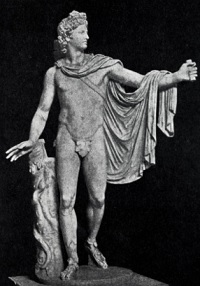 Apollo was a Roman deity of Greek origin, who was considered as the god of Sun, music and dance, truth and prophecy, archery, healing and diseases, poetry and arts, and so on. They also considered him young and lusty, and the patron of doctors as well as bringer of pestilence. As per general belief, he was responsible for bringing order to mankind, was also the chief patron of prophecy and his abode was at Delphi, the centre of oracle in the ancient Mediterranean. He was the son of Jupiter and brother of Diana, and among the most important and complex of gods of the Roman pantheon. Due to his integral nature and truthfulness, he was also believed to be an intermediary between the people and gods. He was among the most loved and respected gods, and due to his various qualities and association with human healing, many hospitals and institutions are named after him world over even in the modern age.
Apollo was a Roman deity of Greek origin, who was considered as the god of Sun, music and dance, truth and prophecy, archery, healing and diseases, poetry and arts, and so on. They also considered him young and lusty, and the patron of doctors as well as bringer of pestilence. As per general belief, he was responsible for bringing order to mankind, was also the chief patron of prophecy and his abode was at Delphi, the centre of oracle in the ancient Mediterranean. He was the son of Jupiter and brother of Diana, and among the most important and complex of gods of the Roman pantheon. Due to his integral nature and truthfulness, he was also believed to be an intermediary between the people and gods. He was among the most loved and respected gods, and due to his various qualities and association with human healing, many hospitals and institutions are named after him world over even in the modern age.
6. Mars
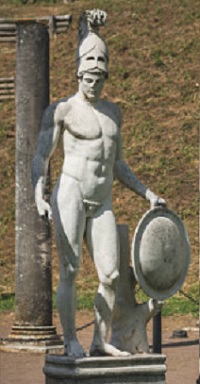 As the god of war, Mars was considered to be the protector of Rome and the Roman empire. He became more popular as the military god during the reign of Augustus, and his power and might was considered as semblance of the restoration of peace. The month of March was derived after his name as a month full of military celebrations and festivities in the Roman empire. He was the son of Jupiter and Juno; his consort was Nerio but he was also known for his adulterous relationship with goddess Venus and other liaisons. According to a Roman legendary myth, Mars also fathered Romulus and Remus with the princess Rhea Silvia. Mars is also considered the guardian god of agriculture, who encouraged cultivation and good crop produce. In Roman arts and paintings, he was depicted as both young and clean-shaven as well as an older god with a helmet and beard carrying a spear.
As the god of war, Mars was considered to be the protector of Rome and the Roman empire. He became more popular as the military god during the reign of Augustus, and his power and might was considered as semblance of the restoration of peace. The month of March was derived after his name as a month full of military celebrations and festivities in the Roman empire. He was the son of Jupiter and Juno; his consort was Nerio but he was also known for his adulterous relationship with goddess Venus and other liaisons. According to a Roman legendary myth, Mars also fathered Romulus and Remus with the princess Rhea Silvia. Mars is also considered the guardian god of agriculture, who encouraged cultivation and good crop produce. In Roman arts and paintings, he was depicted as both young and clean-shaven as well as an older god with a helmet and beard carrying a spear.
7. Cupid
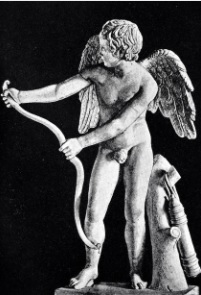 Cupid was the god of love, erotic desires, attraction and affection. He was the son of Mars and Venus and Psyche was his consort. The name of the Greek counterpart of Cupid is Eros. Cupid is mostly depicted with an arrow and bow in his hands which is symbolic to the sexual energy and inspiration that induces the affection and desire in the person a love object or mate. He is also winged suggesting that those in love also want to fly free. Cupid’s power to induce love among people has also been depicted in many mythical stories. In the Renaissance era art, he is often depicted as a sleeping Cupid symbolizing the absence of desire and love.
Cupid was the god of love, erotic desires, attraction and affection. He was the son of Mars and Venus and Psyche was his consort. The name of the Greek counterpart of Cupid is Eros. Cupid is mostly depicted with an arrow and bow in his hands which is symbolic to the sexual energy and inspiration that induces the affection and desire in the person a love object or mate. He is also winged suggesting that those in love also want to fly free. Cupid’s power to induce love among people has also been depicted in many mythical stories. In the Renaissance era art, he is often depicted as a sleeping Cupid symbolizing the absence of desire and love.
8. Venus
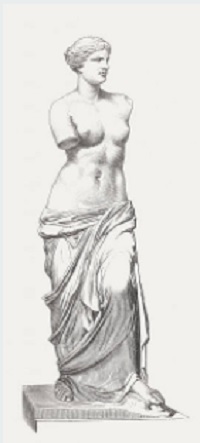 In Roman mythology, Venus was the goddess of love, desire, sex, beauty, prosperity and fertility. She is the Roman counterpart of the Greek goddess Aphrodite; however, Venus had many more abilities beyond the Greek goddess such as victory, fertility and even prostitution. According to the ancient Greek poet Hesiod's Theogony, the origin of the love goddess was from the seafoam after Saturn (Greek Cronus) castrated his father Uranus (Ouranus) and his blood fell into the sea; hence many ancient artworks depict Venus rising from the sea in a clam. Venus has remained among the most popular and central deities among Romans with her famous son Cupid. Apropos to her identity and name, Venus had many divine and mortal lovers and several offspring from these liaisons; of these, two main divine lovers were her husband Vulcan and Mars.
In Roman mythology, Venus was the goddess of love, desire, sex, beauty, prosperity and fertility. She is the Roman counterpart of the Greek goddess Aphrodite; however, Venus had many more abilities beyond the Greek goddess such as victory, fertility and even prostitution. According to the ancient Greek poet Hesiod's Theogony, the origin of the love goddess was from the seafoam after Saturn (Greek Cronus) castrated his father Uranus (Ouranus) and his blood fell into the sea; hence many ancient artworks depict Venus rising from the sea in a clam. Venus has remained among the most popular and central deities among Romans with her famous son Cupid. Apropos to her identity and name, Venus had many divine and mortal lovers and several offspring from these liaisons; of these, two main divine lovers were her husband Vulcan and Mars.
According to a mythical tale, after Vulcan discovered her love affair with Mars, the wife and husband duo had a loveless and issueless life. However, the love liaison of Venus with Mars produced twins Timor (Phobos) and Metus (Deimos), the former symbolizing fear and the latter terror, and Concordia (Harmonia) as the goddess of harmony and concord, besides Cupid already mentioned above. Venus also represented a watery symbol to symbolize her role to maintain the balance of life. She occupied a great importance among the ancient Romans with many temples, cults and festivals associated with her name, who celebrated many festivals symbolizing her various avatars throughout the year that included the spirit of affection, love, fortune, wine, harvest, food and fertility.
9. Saturn
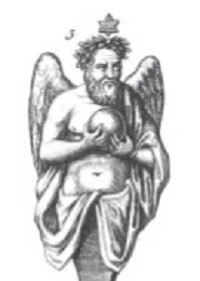 Saturn was the god of time, wealth and agriculture as also dissolution, renewal and liberation. In Roman mythology, Saturn's reign was depicted as a Golden Age of plenty and peace. After the Roman conquest of Greece, he was conflated with the Greek Titan Cronus. His consort was own sister Ops, and two together had divine children Jupiter, Neptune, Pluto, Juno, Ceres and Vesta. He himself was the son of Uranus and Gaia, and his other consort was Lua. While goddess Ops was associated to wealth, abundance and resources, Lua was linked to war, whom the soldiers sacrificed the captured weapons. In Roman calendar too, Saturn was linked with time, especially the festivities of the New Year. The planet Saturn and Saturday were also named after this powerful Roman god.
Saturn was the god of time, wealth and agriculture as also dissolution, renewal and liberation. In Roman mythology, Saturn's reign was depicted as a Golden Age of plenty and peace. After the Roman conquest of Greece, he was conflated with the Greek Titan Cronus. His consort was own sister Ops, and two together had divine children Jupiter, Neptune, Pluto, Juno, Ceres and Vesta. He himself was the son of Uranus and Gaia, and his other consort was Lua. While goddess Ops was associated to wealth, abundance and resources, Lua was linked to war, whom the soldiers sacrificed the captured weapons. In Roman calendar too, Saturn was linked with time, especially the festivities of the New Year. The planet Saturn and Saturday were also named after this powerful Roman god.
10. Minerva
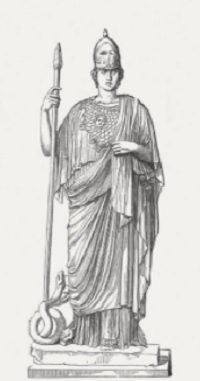 Minerva was the goddess of wisdom, art, poetry, commerce, handicrafts, justice and strategic warfare. She has been amply glorified in the 8th century Roman poet Ovid’s epical poem Metamorphoses (Book of Transformations) of mythico-historical framework chronicling the history of the world from its creation to the deification of Julius Caesar. Minerva is equated with the Greek goddess Athena and has an interesting mythical story associated with her birth. The king of gods Jupiter had a prophecy of his child overthrowing him; hence after impregnating Metis, he swallowed her but unborn Minerva kept giving him a constant severe headache. Finally, Vulcan split Jupiter’s head open with a hammer and Minerva emerged out as an adult goddess bearing full armor and weaponry. Minerva was also known as Minerva Medica meaning goddess of medicine and physicians. In empire era coinage and Roman arts and paintings, she is often depicted holding an owl and a spear.
Minerva was the goddess of wisdom, art, poetry, commerce, handicrafts, justice and strategic warfare. She has been amply glorified in the 8th century Roman poet Ovid’s epical poem Metamorphoses (Book of Transformations) of mythico-historical framework chronicling the history of the world from its creation to the deification of Julius Caesar. Minerva is equated with the Greek goddess Athena and has an interesting mythical story associated with her birth. The king of gods Jupiter had a prophecy of his child overthrowing him; hence after impregnating Metis, he swallowed her but unborn Minerva kept giving him a constant severe headache. Finally, Vulcan split Jupiter’s head open with a hammer and Minerva emerged out as an adult goddess bearing full armor and weaponry. Minerva was also known as Minerva Medica meaning goddess of medicine and physicians. In empire era coinage and Roman arts and paintings, she is often depicted holding an owl and a spear.
11. Mercury
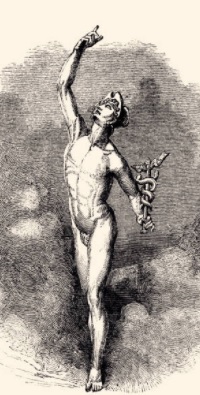 Mercury is yet another important Roman god due to his patronage of luck, commerce, finance, travel, eloquence and poetry. At times, he was also linked with the negative attributes like treachery and theft. He was part of the Dii Consentes* and also believed to guide spirits to the underworld. He was the son of Jupiter from Maia, who often played a role of mediator between the gods and mortals (human beings), and in that his winged feet gave him a distinct advantage of speed. Merchants specially worshipped him with the belief that he would protect and ensure them high profits and earnings through the trade and travel. He was often depicted in paintings and idols with a caduceus in his left hand like his Greek counterpart Hermes and a grand temple was constructed in Rome in 495 BCE in his name in the Circus Maximus.
Mercury is yet another important Roman god due to his patronage of luck, commerce, finance, travel, eloquence and poetry. At times, he was also linked with the negative attributes like treachery and theft. He was part of the Dii Consentes* and also believed to guide spirits to the underworld. He was the son of Jupiter from Maia, who often played a role of mediator between the gods and mortals (human beings), and in that his winged feet gave him a distinct advantage of speed. Merchants specially worshipped him with the belief that he would protect and ensure them high profits and earnings through the trade and travel. He was often depicted in paintings and idols with a caduceus in his left hand like his Greek counterpart Hermes and a grand temple was constructed in Rome in 495 BCE in his name in the Circus Maximus.
12. Vulcan
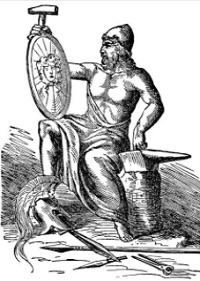 In Roman mythology, Vulcan was considered as the god of Fire, volcanoes, metallurgy and forging, and spouse of goddess of love, Venus. He is often depicted with a blacksmith’s hammer, his Greek counterpart was Hephaestus, and according to popular Roman belief, he represented both constructive and destructive powers of fire. According to a popular legend, Vulcan was born to Jupiter and Juno with a red and disfigured face, hence abandoned by the parents. He was thrown off a cliff and was adopted by his foster mother Themis. Henceforth water became his abode, where once at the beach he found remains of coal fire which he took home and made use to make several implements from the metals like iron, silver and gold, including spoons and knives with pearl handles, which he presented to own foster mother.
In Roman mythology, Vulcan was considered as the god of Fire, volcanoes, metallurgy and forging, and spouse of goddess of love, Venus. He is often depicted with a blacksmith’s hammer, his Greek counterpart was Hephaestus, and according to popular Roman belief, he represented both constructive and destructive powers of fire. According to a popular legend, Vulcan was born to Jupiter and Juno with a red and disfigured face, hence abandoned by the parents. He was thrown off a cliff and was adopted by his foster mother Themis. Henceforth water became his abode, where once at the beach he found remains of coal fire which he took home and made use to make several implements from the metals like iron, silver and gold, including spoons and knives with pearl handles, which he presented to own foster mother.
Apart from the aforesaid gods and goddesses, there is a long list of Roman deities. Besides, aforesaid 3 goddesses, many other goddesses were also considered important and powerful. For the sake of brevity, some other important ones are briefly mentioned here along with their chief characteristics or role: Diana, the goddess of the hunting and Moon, was associated with animals in woodland and also control them; Bacchus, son of Jupiter and Semele often depicted as a child with curly hairs drinking wine, was the god of fertility and wine; goddess Luna and god Sol are shown together as embodiments of moon and sun; Flora was the goddess of spring and flowers symbolizing rejuvenation and budding youth; Fortuna was the goddess of fortune and good luck; Vesta was the virgin goddess of the hearth, home and family; Salacia, the goddess of salt water; and goddess Ceres represented agriculture and motherly emotions.
* Dii Consentes is an epigram representing a group of twelve Roman deities listed as more auspicious gods and goddesses by the poet Ennius around the 3rd Century BCE; Lovis (Jupiter), Apollo, Neptune, Mercury, Mars, Minerva, Venus, Diana, Vulcan, Luna, Vesta and Ceres. The Roman culture greatly fostered around the aforesaid deities inspiring the moral and material inspiration in people’s life. Also, the ancient Roman gods and goddesses as depicted in various arts and literary works represented strong semblance with the contemporary Greek and Etruscan cultures.
Roman Mythological Legends
The ancient Roman mythology comprised of both oral tradition and literature mainly written in the Latin language. It depicted the legacy of ancient Rome, its rich culture and the life of Roman people including historical epics, poetry, comedies and tragedies. The earliest writings and tales were greatly influenced by the Greek mythology such as the Homer’s Iliad and Odyssey. Subsequently, many original mystical stories were written about the origin and events from the lives of the legendary gods and goddesses, including the origin and establishment of Rome. Like other contemporary civilizations, ancient Roman people too had a strong belief in the existence of the supernatural forms and beings as seen in umpteen legendary tales and works of art and literature. A few such representative mythical tales are briefly enumerated here.
1. Romulus and Remus Saga
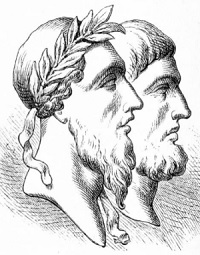 The aforesaid legendary tale is about the origin of Rome itself with two twin brothers Romulus and Remus as the central characters. They are said to be the children of Mars and Rhea Silvia and the legendary twin brothers, who founded the city of Rome in 753 BCE. The story in short goes like as follows. Rhea Silvia was the daughter of Numitor, the king of Alba Longa, who was deposed by Amulius, his evil and conspiring younger brother. Amulius forced Rhea to remain as one of the Vestal Virgins in order to ensure that she does not raise own family giving birth to children who could later claim to the throne. Notwithstanding his restrictions, the Roman war god Mars was attracted to Rhea, and impregnated her to give birth to twins Romulus and Remus. Knowing this, Amulius ordered the infants to be drowned in the Tiber River.
The aforesaid legendary tale is about the origin of Rome itself with two twin brothers Romulus and Remus as the central characters. They are said to be the children of Mars and Rhea Silvia and the legendary twin brothers, who founded the city of Rome in 753 BCE. The story in short goes like as follows. Rhea Silvia was the daughter of Numitor, the king of Alba Longa, who was deposed by Amulius, his evil and conspiring younger brother. Amulius forced Rhea to remain as one of the Vestal Virgins in order to ensure that she does not raise own family giving birth to children who could later claim to the throne. Notwithstanding his restrictions, the Roman war god Mars was attracted to Rhea, and impregnated her to give birth to twins Romulus and Remus. Knowing this, Amulius ordered the infants to be drowned in the Tiber River.
The infants were put in a basket and thrown into the river to die but mythical river god Tiberius took care and saved them. While the basket containing the infants floated down the river and was stuck up with a sacred fig tree at the site of the present Rome, a she-wolf and a woodpecker rescued them. The twins suckled and fed on the milk of the she-wolf until they were found by the herdsman Faustulus and wife Acca Larentia. Totally unaware of their origin and identity, theyu grew up as shepherds but soon were noticed as adventurous young men with daring and leadership qualities owing to their royal lineage. As adults, they had conflict with the supporters of Amulius, who imprisoned Remus out of sheer suspicion and jealousy but Romulus escaped to find ways to secure his brother’s release. In subsequent chain of events, they soon came to know about their true identity and were able to maintain contact with their deposed grandfather.
Consequently, the twins joined and led the forces loyal to their grandfather. A war broke out soon between the forces of Amulius and Numitor, with twin brothers on latter’s side. Eventually, Amulius was killed and the throne was restored to their grandfather. The two brothers started planning for a new township around the seven hills where they were saved and reared by their saviours female wolf and the shepherd. In a further twist of tale, the two brothers developed serious differences over the choice of choosing the appropriate hill for the purpose. As the issue remained unresolved, they requested the intervention of gods who decided that the matter shall be decided through the augury. In the ensuing contest, Romulus claimed victory having witnessed 12 auspicious birds as against 6 of Remus. Even this bid could not resolve the dispute and in the ensuing fight Romulus killed Remus and founded the new city as per his vision and plan.
2. The Legend of Aeneas
As part of the Greco-Roman mythology, Aeneas is described as a Trojan hero, whose father was prince Anchises and mother the goddess Aphrodite (Venus). His father Anchises was a member of the royal family of Troy and first cousin of King Priam of Troy. Apart from being part of the Roman mythology, he also finds a mention as an important character in a Homer's Iliad, an acclaimed ancient epic of the Greek mythology. In the Aeneid, the Latin epic poem by Virgil, Aeneas is described as a hero and ancestor of Romulus and Remus. According to this epic poem, Aeneas was one of the few Trojans, who could neither be killed nor enslaved after the defeat of Troy in the Trojan war waged on them by the Achaeans (Greeks) following prince Paris of Troy took Helen from her husband Menelaus, king of Sparta.
According to a legend, Aeneas was commanded by the gods to gather the remaining Trojans to flee to Italy to become the progenitor of the Romans. This small group led by Aeneas was called the Aeneads, which carried the statues of all Trojan gods and planted them in Italy. The Group kept wandering nearly for six years before settling in Carthage. Aeneas and Dido, the queen of Carthage, had a love affair for some time, following which she proposed to Aeneas for a marriage so that two of them could peacefully live and reign over both the Trojans and Carthaginians. However, due to a contrary advice from his mother Aphrodite, Aeneas secretly left the place for his final settlement in Latium, the region of central western Italy where the city of Rome later came up and grew to be the capital city of the Roman Empire. Queen Dido could not bear the pain and took to suicide. After his own death, when Aeneas descended to the underworld, he again met to his father and Dido there to learn about the future historical events of their successors.
3. Tale of Jupiter and Bee
This legendary Roman tale should appropriately be treated as a fable, a genre invariably associated with a moral lesson. This mythical tale of the Roman King of gods and queen bee is about the sweetness and vengeance in life suggesting that the revengeful attitude may have its dire consequences. One fine day, the queen bee decided to meet Jupiter to complain about the mortals (humans and animals) stealing honey from their hive. After reaching Olympus, queen bee first offered fresh honey to Jupiter. The Roman god was delighted and asked Juno also to taste it. Delighted with the gift of honey, the gods asked the bee to tell the purpose of her visit as also their keenness to grant her a wish. Hesitatingly though, but the queen bee requested Jupiter to grant her a stinger so as to enable her to defend the assets of her hive.
Initially, Jupiter was displeased with her demand and he felt that so empowered, she might even sting him and hurt other gods. However, Juno prevailed in agreeing that such a wonderful tasting stuff (nectar) must indeed be protected. She suggested that every bee must have a stinger but at the same time it must pay a price too for stinger’s use. Therefore, any bee who uses Jupiter’s gift must pay for it with their life. In other words, either share the produce or protect it and die. Queen bee cried hearing this but Jupiter had already granted her wish by that time. This gift of Jupiter stayed with the bees for all time to come, and even today if any bee uses stinger it pays for it with life. The moral of the story is that everyone should be content with what they have as wishing any good for self at the cost of others might only lead to own downfall.
4. Jupiter and Lo Escapade
The story of Jupiter and Lo is inspired by Roman poet Ovid’s famous classic Metamorphoses. Jupiter was the king of gods while Lo was the daughter of Inchas, the first king of Argos. In ancient Roman literature, Lo is depicted as an Argive princess, and ancestor of many kings and heroes such as Perseus, Cadmus, Heracles, etc., however, in some other versions she is also depicted as a priestess. Jupiter was the most powerful god and goddess Juno as her powerful wife but he had a Casanova-type character and was often tempted towards other women, both divine and mortal, leading to a desire ridden sexual escapades in various disguise. When he saw the mortal woman Lo, he started lusting for her and changed himself into a dark cloud so as to live closer to her hiding from own wife.
However, when goddess Juno noticed the black cloud, she was able to easily recognized her husband. Now when Juno visited earth to catch the two, Jupiter changed Lo into a white cow with an intent to save her from own wife’s wrath. Notwithstanding Jupiter’s trick to hide Lo, Juno again located her in disguise of white cow and put her under the surveillance of Argus to stop Jupiter visiting her, who was a giant with one hundred eyes that hardly ever closed. In order to rescue Lo, now Jupiter detailed his son Mercury who would tell stories to Argus to make him sleep. He was successful is his task; hence when Argus fell asleep, Mercury killed him in order to get Lo freed. This time, Juno was so upset that she dispatched a poisonous gadfly to sting white cow (Lo) for a lifetime. It was only then that Jupiter vowed to Juno not to chase Lo again that she was released. Afterwards, Lo shifted to Egypt and later recognized there as an Egyptian goddess.
5. Pluto and Styx River
As mentioned in the preceding paragraphs, Pluto is Roman god of death and ruler of the underworld. According to an ancient Roman belief, everyone after death had to travel to the underworld. Every such dead was required to cross the Styx, the mythical River of the Dead. For this reason, the dead body was buried with a coin in the mouth of the deceased (soul), which he would have to pay to the ferryman Charon to across the river. Another omen attached with the water of this river was that even god cannot escape its repercussions and anyone coming to its contact would lose voice for nine years. The planet Pluto was named after the Roman god Pluto and one of this planet’s moon too is named after the ferryman Charon.
Postlude
Roman civilization is indeed among the most evolved and glorious ancient civilizations of the world. Christianity as the most widespread and most followed religion in the world today took its roots in the ancient Roman empire and from there it spread to other parts of the Europe and Africa and across the world through the middle and modern ages. The Roman calendar has received universal acceptance and the ancient Roman military strategies and laws too has deep impact on similar disciplines in the modern world. Other prominent gift of Roman civilization includes Latin derived Western alphabets and Romance languages such as Italian, French, Spanish, Portuguese and Romanian. While India is known for many republic states in the ancient age, ancient Roman republic is perhaps the only state with the features of governance by the elected representatives through a democratic process in the western world.
Continued to Next Page
Images (c) istock.com
20-Feb-2021
More by : Dr. Jaipal Singh